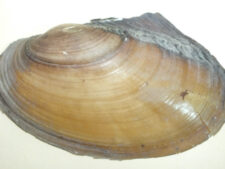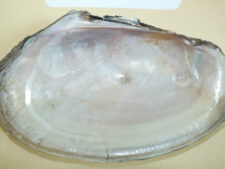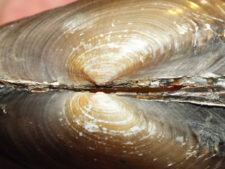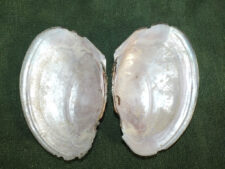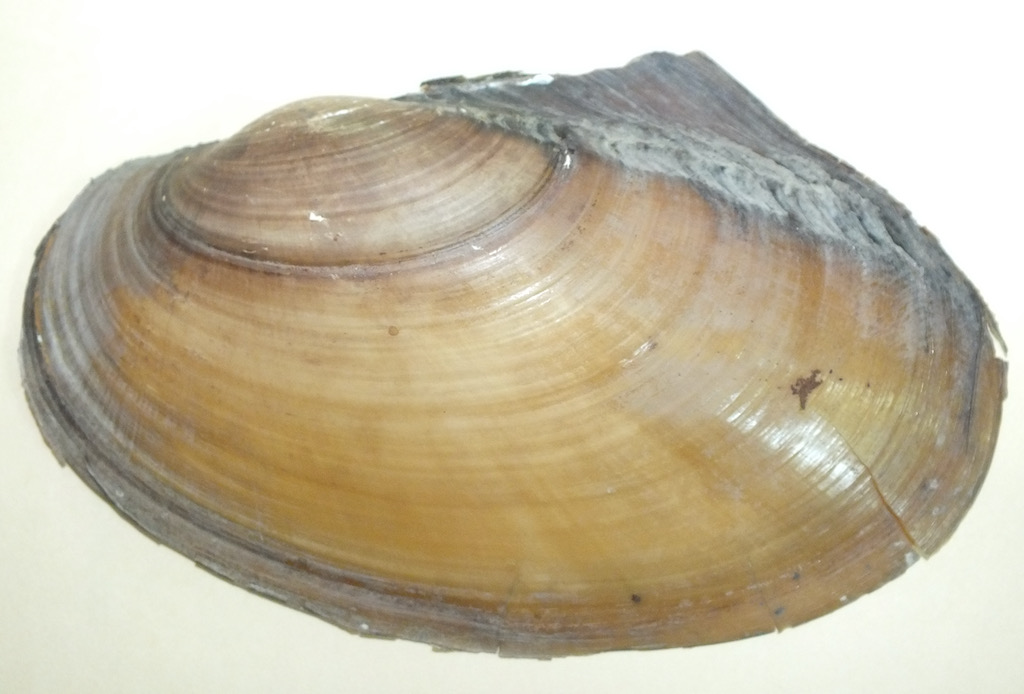
The Giant Floater is a thin-shelled species that can grow to 8 inches (200 mm). The shell is a long oval that is glossy and smooth. Colors can vary from tan to green to brown and almost black. The interior is white, sometimes with a light pinkish cast. Anterior end is rounded and posterior end is bluntly pointed.
The Giant Floater is widely distributed throughout the eastern two-thirds of North America with records from Mexico to the Northwest Territories in Canada. They are common throughout Nebraska and are found in ponds, lakes and sluggish mud-bottomed pools of creeks and rivers. Found in rivers with sand and gravel beds but most common in reservoirs, lakes and ponds.
The Giant Floater is a filter feeder that removes food particles from the water, primarily phytoplankton (algae). For reproduction males release sperm into the water and females take in the sperm while filtering. Females remain gravid from several weeks to several months. The breeding season lasts from early August to the following April or May. The larvae, called glochidia (0.35 mm long), are parasitic on the gills of fish. They attach to gills to facilitate distribution to other areas and drop off to complete development.
The content of NatureSearch is provided by dedicated volunteer Naturalists of Fontenelle Forest who strive to provide the most accurate information available. Contributors of the images retain their copyrights. The point of contact for this page is: Loren Padelford.

